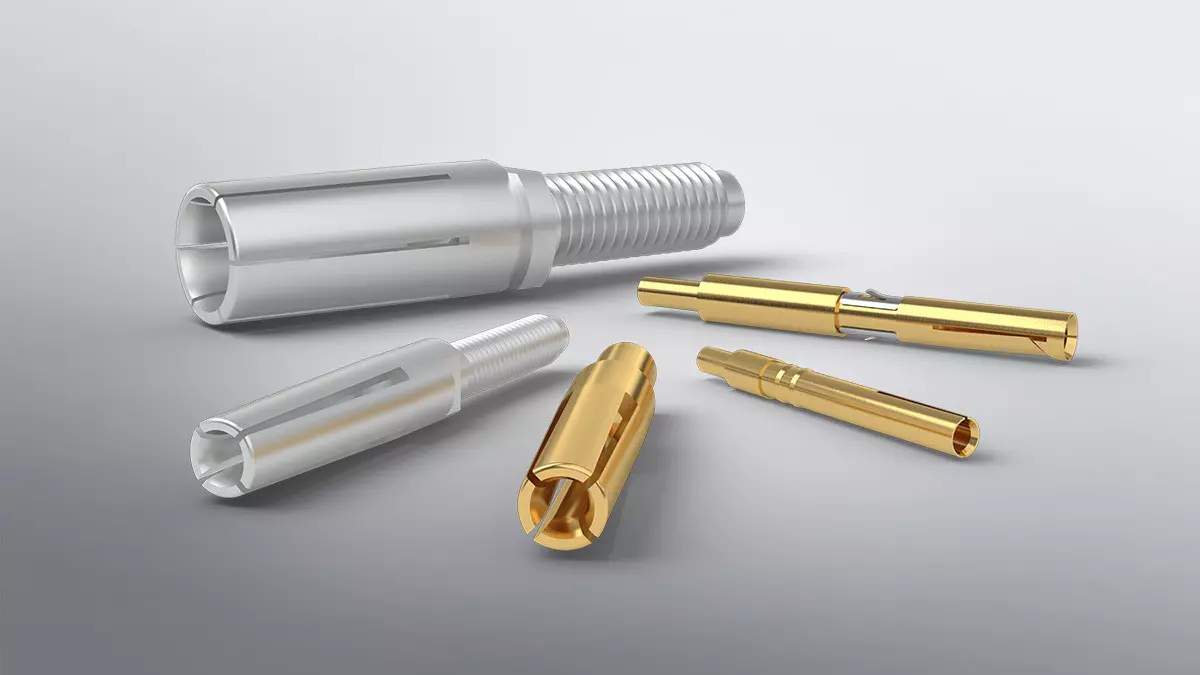-
Products
Find your matching solution Your suitable product category in a few clicks.
- Technologies
- Industries
- Service
- Company
ODU LAMTAC®
Contacts with lamella technology
Thermally stable
High current‐carrying capacity
Cable assembly included
Up to 10,000 mating cycles
The high‐performance ODU LAMTAC® contact system enables reliable connections at high temperatures of +150 °C and with current loads of up to 2,400 A. Depending on the design, one or more stamped lamella strips are installed in the turned bodies. The individual louvres on the lamellae provide a large number of contact points.
- Particularly shock resistant and durable
- Current‐carrying capacity of up to 2,400 A
- High vibration resistance and contact safety
- Low contact resistance
Compare products
 ODU LAMTAC®
|
 ODU SPRINGTAC®
|
 ODU SPRINGTAC® Flatsocket
|
 ODU TURNTAC®
|
|
|---|---|---|---|---|
| Primary attribute | High temperature & current | High mating cycles | High mating cycles | Rugged |
| Contact technology | Lamella technology | Springwire technology | Springwire technology | Turned, slotted contacts |
| Contacting | 19 lamella louvres with 2 contact points each (size ∅ 6 mm) | 44 wire springs (size ∅ 6 mm) | 30 wire springs (size 6.3 x 0.8 mm) | 4 contact fingers (size ∅ 6 mm) |
| Nominal current | 115 A (size ∅ 6 mm) | 110 A (size ∅ 6 mm) | 27 A (size 6.3 x 0.8 mm) | 100 A (size ∅ 6 mm) |
| Angular misalignment | +/- 1° | +/- 1° | +/- 5° * | |
| Mating cycles | > 10,000 | > 100,000 | > 50,000 | > 10,000 |
| Temperature range standard version | -40 °C to 150 °C | -40 °C to 125 °C | -40 °C to 125 °C | -40 °C to 125 °C |
| Contact size** | from ∅ 1.5 mm | from ∅ 0.76 mm | from 0.64 x 0.64 mm | from ∅ 1.5 mm |
| Standard plating | Ag / Au | Ag / Au | Ag / Au | Ag / Au |
| Crimp termination | • | • | • | • |
| Screw termination | • | • | • | • |
| For busbars (through-hole design) | • | • | •*** |
* Max. 5° misalignment in the assembly position with a correspondingly designed contact chamber
** Other sizes on request
*** Optional
Expanded Beam Performance
Discover the new diversity now!
ODU LAMTAC® with lamella technology
Experience the outstanding properties of the ODU LAMTAC® Contact System with lamella technology. With maximum current‐carrying capacity and high thermal stability, these contacts are the perfect choice for all high‐current contacting requirements across a broad spectrum of high‐power applications. Their minimal power loss enables maximum performance, even in the smallest of spaces.





